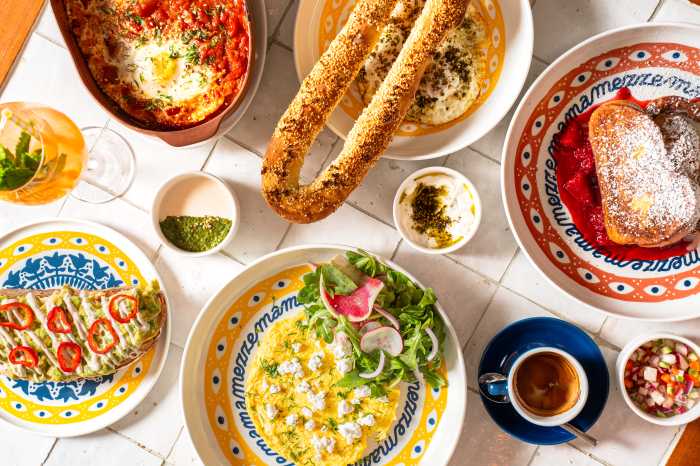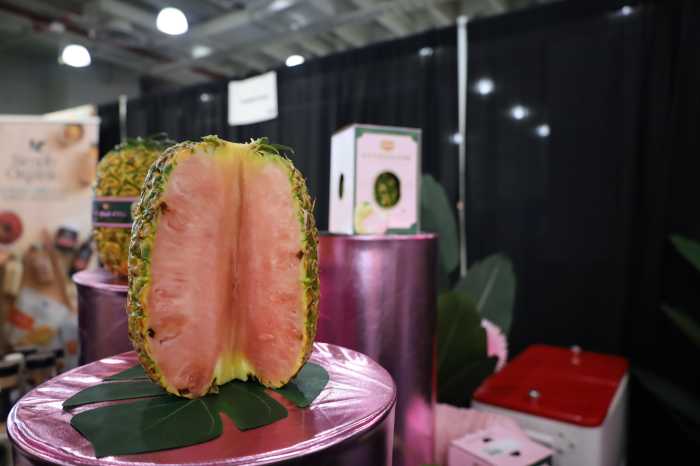
Ruth Reichl is no stranger to the memoir. She covered her NYC childhood in “Tender at the Bone,” her career as a restaurant critic in “Comfort Me with Apples” and “Garlic and Sapphires,” and her relationship with her mother in “For You Mom, Finally.”
In her latest, “Save Me the Plums,” out April 2, the James Beard Award-winning writer follows her 10-year tenure as editor-in-chief of Gourmet, until the influential food magazine closed in 2009.
amNewYork spoke with Reichl, a former New York Times restaurant critic who now lives upstate, about the book.
You’ve written several memoirs — why did you want to revisit this time in your life?
I always knew from the moment that I went to Gourmet that I would want to write about it. But I really thought I would write a different kind of book. I thought I would write … [about] the strange and wonderful world of Condé Nast. And then, you know, when I actually sat down to write the book I realized, what an extraordinary time period that 10 years was in American publishing. And that the book had to be much deeper than what I had originally thought. I originally thought it would be a breezy book. There’s certainly all of that in it, the Condé Nast lifestyle. But then for me, it was not only about the sort of golden age of American magazine publishing, and the end of it, but also, in this #MeToo moment, I started thinking I wanted to write about what it was to be a woman learning to be a boss, a working mother. I actually had something useful to say to other women.
Reflecting on that, what did you want to impart?
I think that women are different kinds of leaders than men are. I really wanted to talk about how what I came to understand, the longer I was there, was that I had 65 people working for me, and how important it was for me to make it a good workplace. I am proud of what we did at the magazine. But I am equally proud of the fact that I think that most of the people who worked at Gourmet really enjoyed working there.
In the years since it’s closed, what has continued to be the legacy of Gourmet?
It really is amazing, there’s not one day that has gone by in the almost 10 years that the magazine has been closed that someone doesn’t come up to me say how much they miss the magazine, and start telling me stories of what Gourmet meant to them in their lives. I don’t just mean my Gourmet, but Gourmet in all its history. … I feel like we lost something important when we lost that magazine. It’s especially sad to me because this has become such an important moment in American food, the last 10 years have been amazing. Food has become a part of popular culture in a way it never was before. And the fact that we didn’t have Gourmet magazine sort of weighing in on it feels like a huge loss to me.
The book is very vivid. What did you rely on to recall that time?
I kept really good notes. I am one of those people who’s a pack rat. When I left there, unlike many companies, Condé Nast didn’t march me out the door and say you can’t have any of your stuff. In fact I took everything. I have files on every issue we ever did. I printed out emails. I got stacks of stuff that helped me remember what was going on. It really helped that, unlike all my other memoirs, this one was something I literally always knew I was going to write. I was very careful to keep notes and diaries. When an important conversation took place I went back and wrote it down. I was a newspaper journalist, I had never lived in that world at all, this world of clothing allowances and hair dressers and makeup, limousines. I just never lived like that before. I knew that there was going to be something really interesting to write.
You mentioned how much the food culture has changed over the years. What have been some things that have really piqued your interest?
When I was growing up, the people who drove food culture were rich, old white people. And today, the people who drive food culture are young people. That’s a huge change. The people who matter most are mostly people between 20 and 35 and they have changed the way we all eat. And the other huge change is that food trends used to come from the top down, so what happened in fancy restaurants eventually trickled down to people’s tables. Now it’s the other way around, and food trends are coming from the street up. What happens in food carts now comes to our tables.
That seems to be something you kind of championed in your career as well.
Oh, absolutely. When I got to The New York Times, one of the first things I did was go out and do a review of street carts. I’ve always loved that food.
Are there restaurants you’ve been to recently in the city that you enjoyed?
I was in for the opening of Hudson Yards, and I was really blown away by José Andrés’ Mercado Little Spain. I can’t wait to come back and eat my way through that food hall. He has fantastic paellas and amazing seafoods and incredible roast pork. I am enthralled with Atomix, the Korean restaurant. I don’t think we’ve ever seen anything quite like that in the city, or maybe anywhere in the United States, before this — really gorgeous, high-end Korean food, that’s like a lesson in Korean gastronomy. And I had dinner at the Standard Grill last week. Rocco DiSpirito is cooking again, which makes me very happy. The amazing thing is, most chefs, when they’re running a kitchen, they just expedite. He’s actually on the line cooking. And I thought the food was wonderful.
Are there places that are your go-tos?
There are lots of them. Probably the place we go most often is Pearl Oyster Bar. They do a few things perfectly, which makes me very happy. I also to go Via Carota a lot. I love their food. And I am a regular at Gray’s Papaya. It’s probably actually my favorite New York breakfast. I get myself a hot dog and then I walk down to the river and walk along the river. It’s just a great way to start the day.
Are there other things that you’re working on?
I have a column in Town & Country. And I actually still owe Random House two novels, so I’m working on those. But that will be a while coming. And I’m doing a project with Netflix soon. They optioned “Comfort Me with Apples,” so hopefully that will happen.
IF YOU GO
Ruth Reichl celebrates the release of "Save Me the Plums":
-In conversation with Jeff Gordinier on April 1 at 7 p.m. at St. Ann’s Church | 157 Montague St., Brooklyn Heights | Tickets $33.50 (includes book) at eventbrite.com
-In conversation with Francis Lam on April 2 at 6 p.m. at Rizzoli Bookstore | 1133 Broadway | Tickets $27 (includes book) at eventbrite.com





































